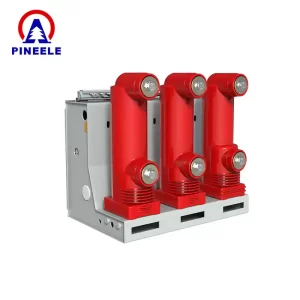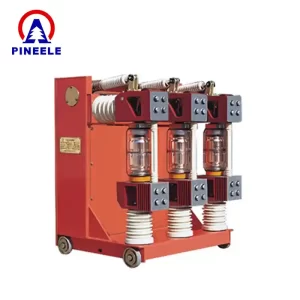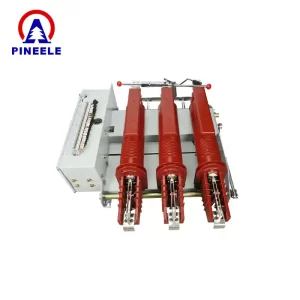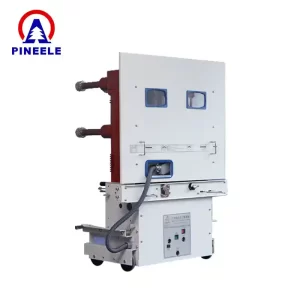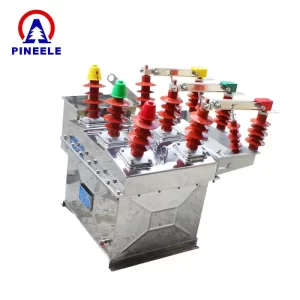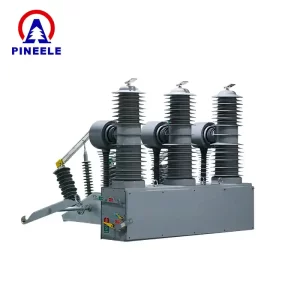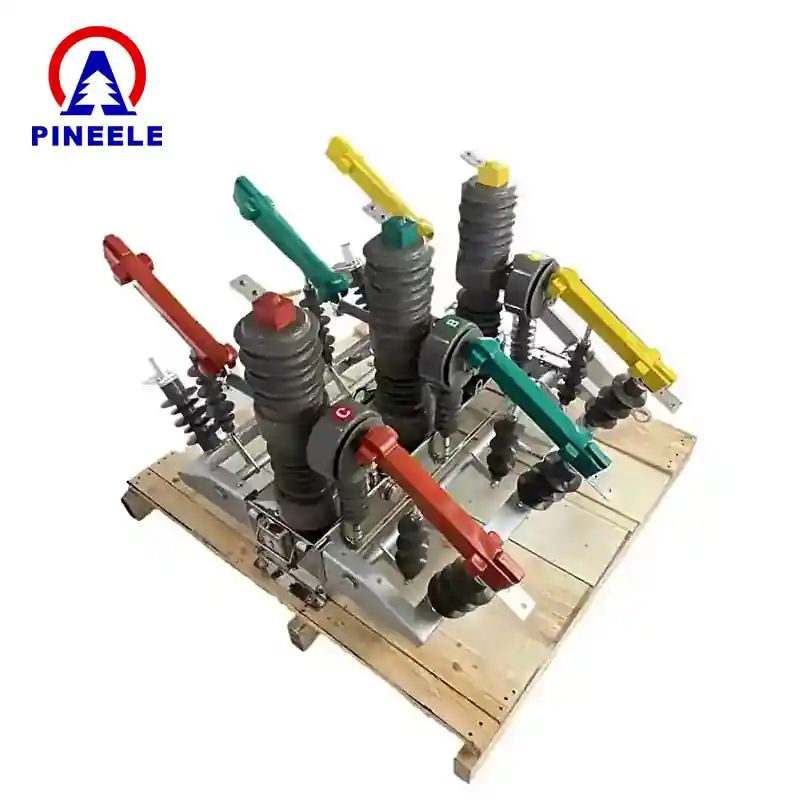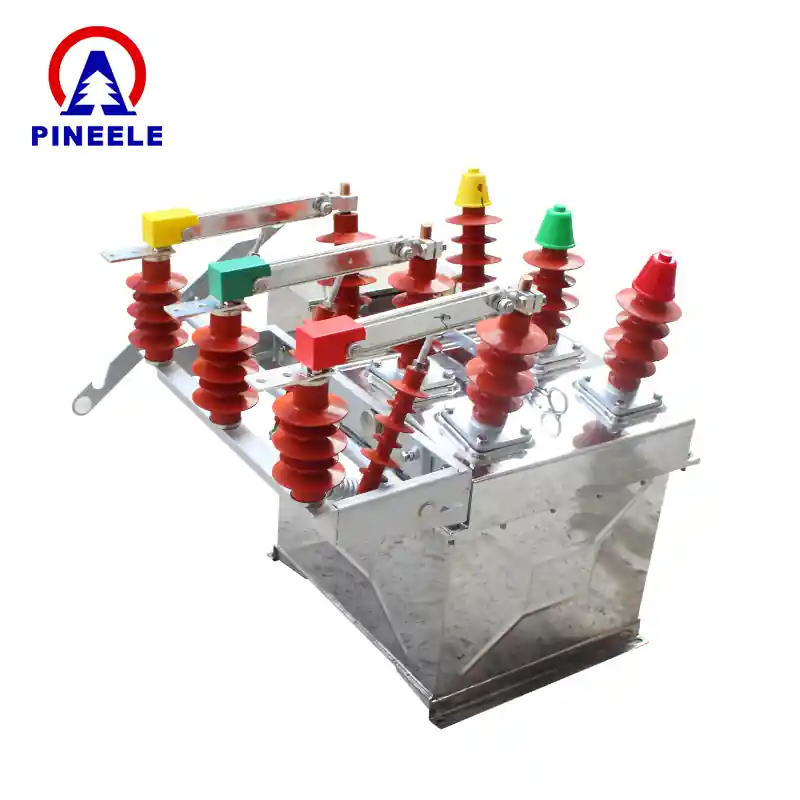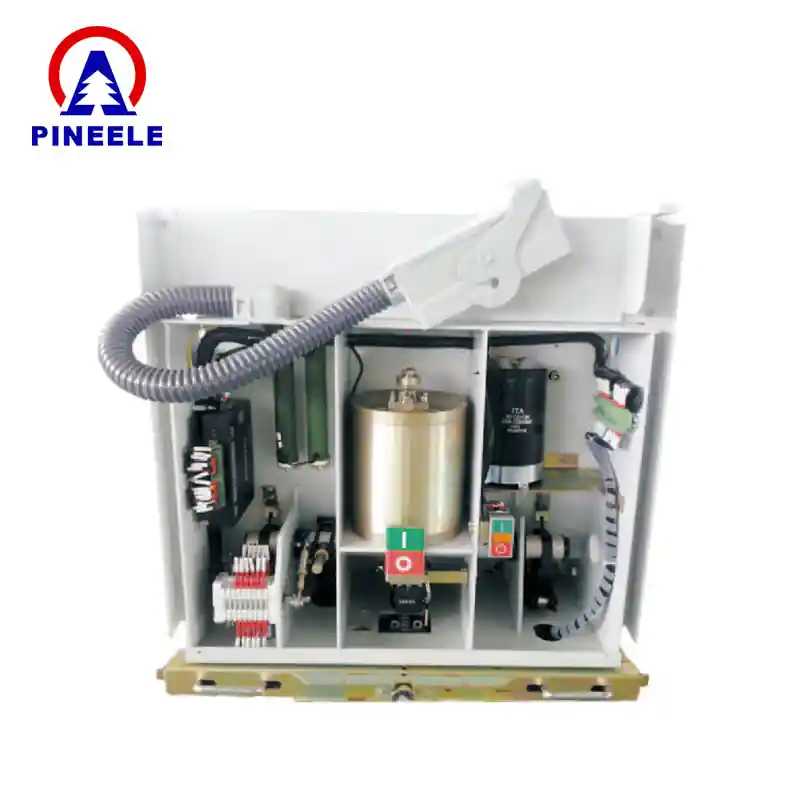
Vacuum Circuit Breaker (VCB)
The Vacuum Circuit Breaker (VCB) is a crucial device used in electrical power systems to protect circuits from overloads, short circuits, and other electrical faults. It operates by automatically disconnecting power when abnormal conditions are detected, preventing damage to electrical equipment. The VCB utilizes a vacuum environment to extinguish the arc that forms when the breaker opens. This vacuum arc quenching provides superior insulation, minimizes wear, and enhances the breaker’s longevity and reliability compared to traditional breakers.
VCBs are widely employed in medium-voltage electrical systems, such as substations, industrial plants, and power distribution networks. Their compact size, low maintenance needs, and high breaking capacity make them a preferred choice for modern electrical grids. With advancements in technology, VCBs are essential in maintaining the safety and efficiency of electrical systems, contributing to a more reliable and eco-friendly power distribution infrastructure.
The Vacuum Circuit Breaker offers several advantages over other types of circuit breakers, particularly in medium-voltage applications. It is known for its high interrupting capacity and ability to perform well in high-fault current conditions. Additionally, its environmentally friendly design, which eliminates the use of oil or gas for arc quenching, makes it a sustainable choice for modern electrical networks. By employing VCBs, industries can reduce maintenance costs, enhance system stability, and minimize the environmental impact of electrical fault protection devices.
Applications of Vacuum Circuit Breakers (VCB)
The Vacuum Circuit Breaker (VCB) is a key protective device used in medium-voltage electrical systems, such as substations and industrial plants, offering reliable protection against faults like overloads and short circuits. VCBs are especially suited for environments where high fault currents are common, as they can quickly disconnect faulted circuits, preventing damage to vital equipment.
1. Medium-Voltage Electrical Systems
VCBs are widely employed in medium-voltage power distribution systems, including substations and industrial plants. In these environments, VCBs protect equipment by rapidly isolating faulty circuits, ensuring continuous operation and minimizing system downtime. Their high interrupting capacity makes them suitable for handling medium-voltage applications, keeping electrical systems stable and reliable.
2. High Fault Current Protection
One of the major advantages of VCBs is their ability to interrupt high fault currents without causing damage to the breaker itself. This makes them ideal for applications where fault currents are high, such as power stations and industrial facilities. VCBs prevent catastrophic failures by quenching the arc in a vacuum, which enhances the reliability and longevity of the electrical system.
3. Eco-Friendly Design
VCBs are environmentally friendly due to their vacuum arc quenching technology, which eliminates the need for oil or gas, substances that can be harmful to the environment. This design not only reduces the risk of contamination but also ensures safer operation in both industrial and residential areas. The long service life and low maintenance requirements of VCBs further contribute to their eco-friendly benefits.
Benefits of Using Vacuum Circuit Breakers (VCB)
The Vacuum Circuit Breaker (VCB) offers several significant advantages that make it an ideal choice for modern electrical systems. From improving system stability to enhancing the longevity of electrical equipment, VCBs provide crucial benefits that contribute to the overall performance and sustainability of electrical networks.
1. Improve Power System Stability and Safety
The primary function of a Vacuum Circuit Breaker is to provide reliable protection for electrical circuits against overloads and short circuits. By rapidly interrupting fault currents, VCBs prevent damage to vital components in the power system, such as transformers and cables. This ability to quickly disconnect faulty circuits ensures that the rest of the system remains stable and functional, minimizing the risk of widespread power outages. In addition, by preventing electrical faults from escalating, VCBs enhance the overall safety of the electrical infrastructure, protecting both equipment and personnel.
2. Reduce Maintenance Costs
One of the standout advantages of the Vacuum Circuit Breaker is its low maintenance requirements. Unlike traditional circuit breakers, which rely on oil or gas for arc quenching and require frequent maintenance, VCBs use a vacuum to extinguish the arc. This vacuum design significantly reduces wear and tear on the breaker’s components, leading to fewer maintenance interventions and lower operational costs. The long service life of VCBs also reduces the need for frequent replacements, contributing to cost savings over time for industries and utilities.
3. Eco-friendly, No Use of Oil or Gas
Unlike conventional circuit breakers that use oil or gas for arc quenching, the Vacuum Circuit Breaker operates in a vacuum, which eliminates the need for potentially hazardous materials. This makes VCBs an environmentally friendly option for modern electrical systems. The absence of oil or gas not only reduces the risk of contamination or leakage but also ensures that VCBs can be safely operated in a variety of environments without concerns about harmful substances. As a result, VCBs contribute to a cleaner, more sustainable electrical infrastructure.
4. Extend the Lifespan of Electrical Equipment
By providing high-quality protection and interrupting fault currents efficiently, Vacuum Circuit Breakers play a crucial role in extending the lifespan of electrical equipment. The quick isolation of faulted circuits prevents stress and damage to other components in the power system, such as transformers, cables, and switchgear. This helps maintain the integrity of the entire electrical network and reduces the likelihood of equipment failure, thus prolonging the life of valuable assets and reducing the need for expensive repairs or replacements.
The Vacuum Circuit Breaker is an essential component for ensuring the safety, reliability, and sustainability of modern electrical systems. By improving system stability, reducing maintenance costs, offering an eco-friendly design, and extending the lifespan of electrical equipment, VCBs offer substantial benefits for industries, utilities, and power distribution networks. With its numerous advantages, the VCB continues to play a key role in the efficient operation of electrical grids worldwide.
